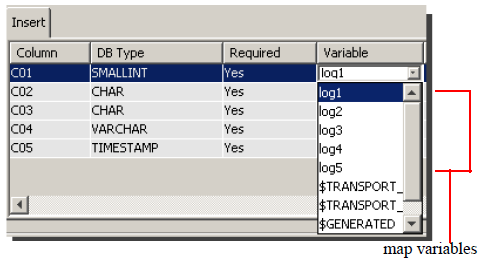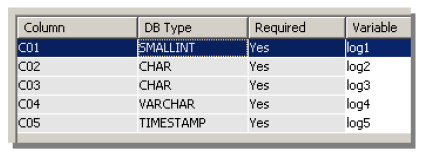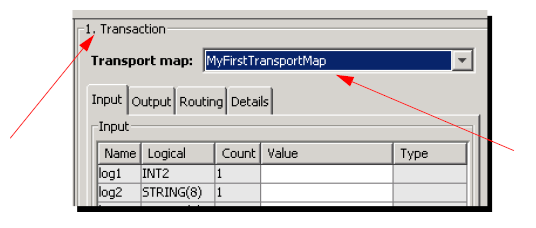Now that you have created the map variables, the last step is to associate the map variables with the database table columns. This is the payload that will be stored on the enterprise system. For this example, the payload will facilitate an SQL Insert operation.
- Go to the table at the bottom of the To
Enterprise section.
- Select the first database column. For this example,
CO1.
- Click the Variable column.
A list appears with the map variables that you just created.
- Select the map variable that you want associated
with the database column. For this example, log1.
- Repeat steps 2 through 4 for each column in the
table.
The completed To Enterprise section will be similar to the following.
- When you complete the transport map, click
Validate. If no errors are received,
click Save.
The new transport map is saved to the current node, and the name is added to the Transport Maps window.
The transport map also becomes available from the TransportMap drop-down list when creating a trigger with a Transactionaction.
The final step is to create the trigger and associate the map variables in the trigger Transaction action definition. For more information, seeUsing a local database.